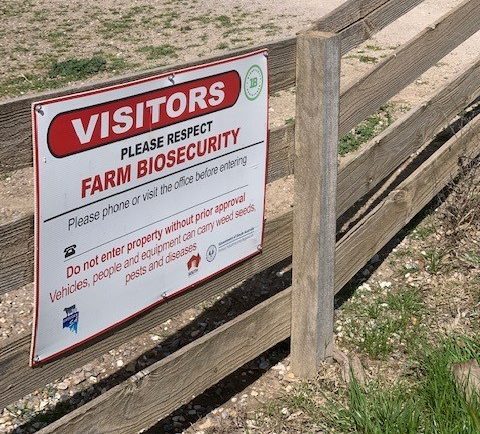
Biosecurity push needs a national focus
For over a decade all governments have agreed to a strategic direction for our biosecurity system to protect Australia’s way of life. All governments have also been aware that Australia’s biosecurity system is becoming increasingly complex, and decisive actions are needed to ensure the system remains fit for purpose.
The key to this is a genuine commitment to harmonisation. While the Intergovernmental Agreement on Biosecurity came into effect in January 2012, the timeframe to install the legislative arrangements that underpin it have been anything but harmonised. Federally the Biosecurity Act came into effect in June 2016, Queensland in July 2016, NSW in July 2017, while here in South Australia we are still in the consultation phase.
A National Biosecurity Strategy was signed last year providing a renewed focus for prioritised actions and investment. Unsurprisingly, the key ‘Sustainable Investment’ actions are consistent with recommendations that have been made time and again through various reviews of our biosecurity system.
The last step change investment initiative was in 2018 when a federal biosecurity import levy was proposed to raise $325 million over three years. The proposed $10 biosecurity charge on 20-foot containers, and a $1 per tonne levy on bulk imports coming via sea was abandoned after lobbying by cement, minerals and freight industry groups.
Based on experience from the last decade, we are unlikely to see a sustainable investment model capable of delivering a genuine ‘one system’ approach – not nine separate systems with weak links as we currently have – without new thinking and greater commitment to harmonised actions.
The current investment model has disparate levels of available funds and resourcing across jurisdictions due to various factors including population and the ability to raise revenue, election cycles, and government of the day priorities. Considering that biosecurity is about protecting Australia’s health, economic, environmental and national security interests against the threats of today and tomorrow, and that destructive biosecurity diseases, pests and weeds do not consider how well funded or prepared a particular jurisdiction is, the current investment approach is flawed.
Governments will soon start negotiations on the funding they will provide towards implementing their joint decision to transition the sheep and goat industries to individual identification through eID tagging. Successful implementation will depend on the level of funding, resources and support that are provided. To determine cost sharing arrangements for the future, the current arrangements in each jurisdiction must be considered.
South Australia is the fourth largest jurisdiction by area and the only state to share a border with every other mainland state. While it is 4.3 and 1.2 times larger than Victoria and NSW respectively, it only has 28% and 22% of their populations. We therefore have more ground to cover and borders to monitor but with a much lower revenue base.
GST is distributed to the states and territories based on the principle of horizontal fiscal equalisation, which is designed to ensure that each jurisdiction has the fiscal capacity to provide the same standard of education, health and public transport to their residents. A similar model should be considered to realise sustainable biosecurity funding that can deliver ‘one system’.
By Travis Tobin
